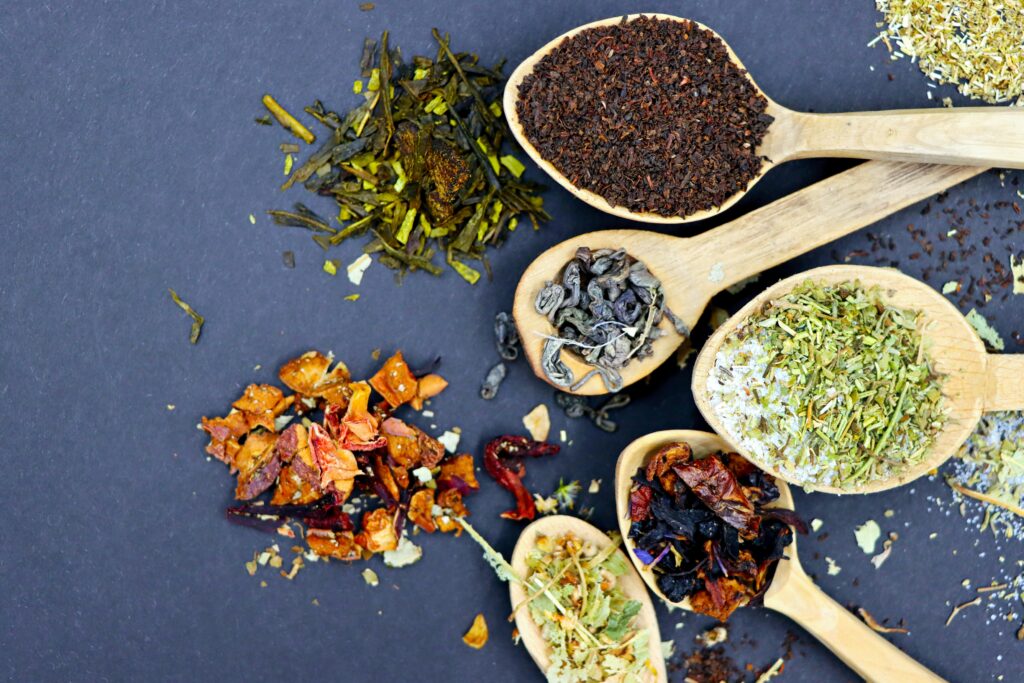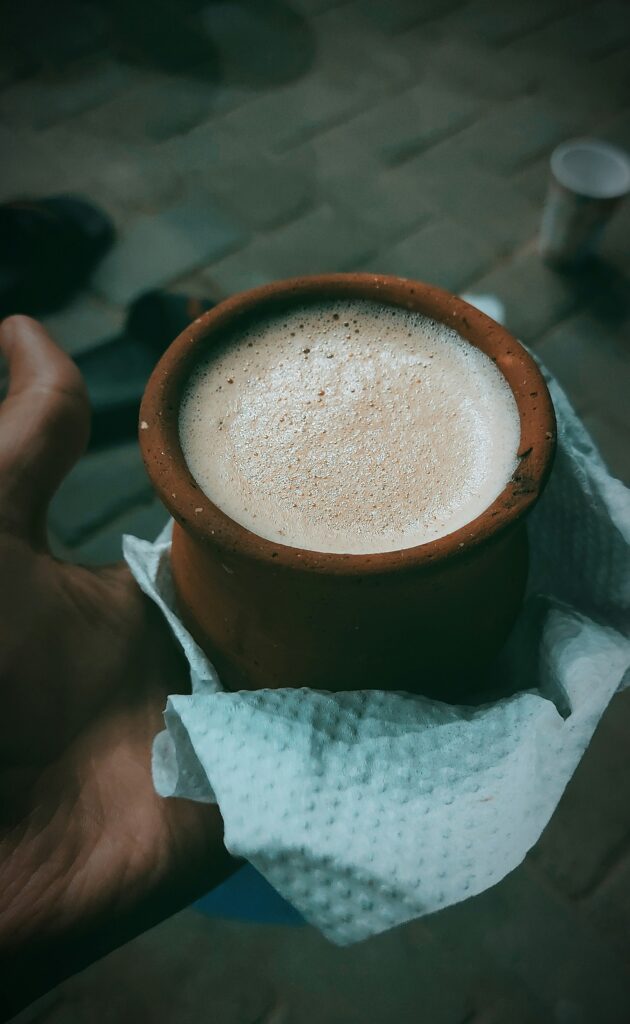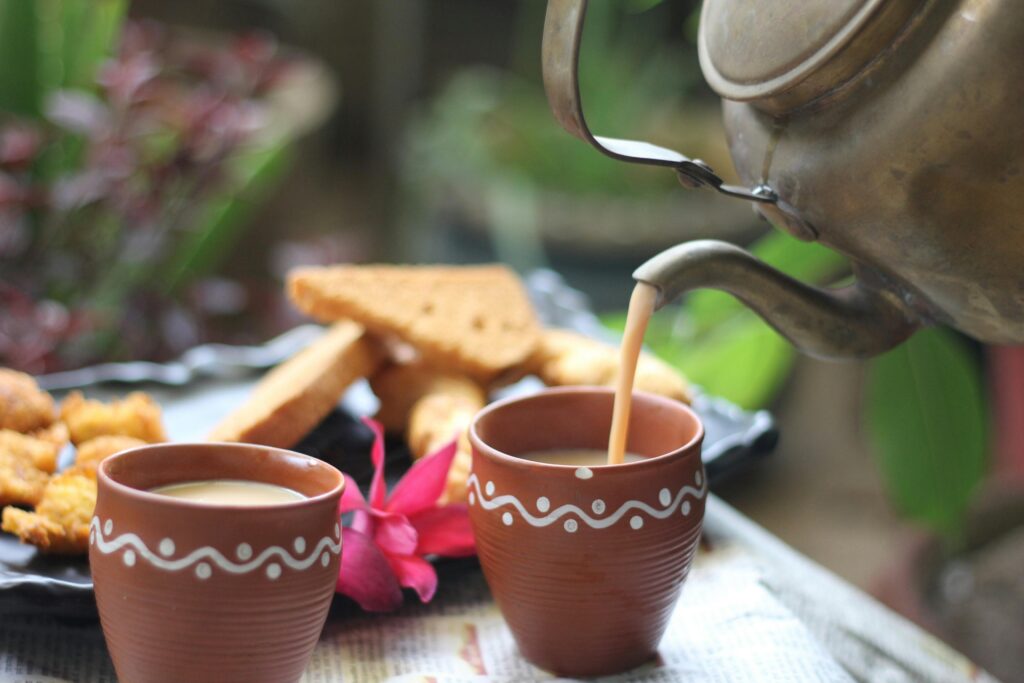Matka chai in English translates directly to “clay pot tea” — a traditional way of making and serving tea in Pakistan that enhances flavor through the use of unglazed clay cups or pots. More than just a method of drinking tea, it’s a centuries-old tradition that blends taste, aroma, and cultural heritage into every sip.
In Pakistan, this drink is enjoyed everywhere — from bustling city markets to quiet rural villages. Whether served by a street vendor or in a trendy tea café, matka chai retains its rustic charm and distinctive earthy taste.
1. Meaning of Matka Chai in English
In English, matka chai literally means tea in a clay pot. The matka refers to an earthenware vessel traditionally used for storing water or cooking, while chai means tea. In this context, the tea can be brewed inside the clay pot or simply poured into a clay cup (known as kulhad) for serving.
2. Historical Roots of Matka Chai
2.1 Pre-Tea Era – Clay in South Asian Culture
Clay pots have been part of South Asian life for thousands of years, used for cooking, storing water, and fermenting foods. They were valued for their ability to keep liquids cool and for adding a subtle mineral taste.
2.2 Arrival of Tea in the Subcontinent
Tea was introduced to the region in the 19th century during British colonial rule. Over time, Pakistan developed its own tea culture, and combining chai with the traditional clay vessel became a natural blend of old and new practices.
2.3 Growth of the Matka Chai Tradition
By the mid-20th century, roadside tea stalls began serving chai in clay cups, partly for flavor and partly for the nostalgic touch it gave. It quickly became a popular trend in urban and rural Pakistan alike.
3. What Makes Matka Chai Special?
3.1 The Clay Pot Advantage
Unglazed clay is porous, which allows some of the tea’s moisture to seep into the cup walls, releasing aroma and slightly altering the taste.
3.2 Enhanced Aroma
When steaming hot tea is poured into the clay cup, the heat interacts with minerals in the clay, producing a unique earthy fragrance.
3.3 Cultural Connection
Matka chai offers more than flavor — it delivers a sensory reminder of traditional Pakistani life, especially for those who grew up in rural areas.
4. Essential Ingredients for Authentic Matka Chai
- Strong Tea Leaves – Usually robust black tea from Assam or Kenya.
- Fresh Milk – Buffalo milk is preferred for creaminess.
- Sweetener – White sugar or jaggery (gur).
- Aromatic Spices – Cardamom, cinnamon, ginger, cloves, and sometimes fennel seeds.

5. Traditional Method of Making Matka Chai
5.1 Brewing
- Boil water with tea leaves until it turns dark.
- Add milk and sugar, and simmer for several minutes.
- Add spices to enhance aroma and taste.
5.2 Serving
- Pre-soak clay cups in water to avoid cracking.
- Pour the hot tea directly into the cups.
- Serve immediately while steaming hot.
6. Variations of Matka Chai in Pakistan
- Masala Matka Chai – Spicy and warming with cardamom, clove, and cinnamon.
- Kashmiri Matka Chai – Pink tea made with green tea leaves, salt, and milk.
- Gur Matka Chai – Sweetened with jaggery for a rich caramel taste.
7. The Art of Clay Pottery for Matka Chai
Clay cups (kulhads) are made by skilled potters who shape the vessels on a wheel, sun-dry them, and then fire them in a kiln. The unglazed surface is key to the drink’s distinctive aroma.
8. Where to Enjoy Matka Chai in Pakistan
8.1 Karachi
Burns Road, Chotu Chaiwala DHA, Saddar tea stalls.
8.2 Lahore
Lakshmi Chowk, Tea Studio, Mall Road tea vendors.
8.3 Islamabad
Melody Market, Chai Mehfil, and F-6 Markaz tea cafés.
9. Health Benefits of Matka Chai
- Rich in Antioxidants – Supports cardiovascular health.
- Digestive Boost – Cardamom and ginger help digestion.
- Natural Cooling & Detox – Clay cups may help neutralize acidity.
10. Social and Cultural Significance
Matka chai gatherings bring together people from all walks of life. Street stalls become hubs of discussion, business talks, and community bonding.
11. Matka Chai in Modern Cafés
Trendy cafés are reviving matka chai with fusion recipes — adding chocolate, saffron, or rose petals for a gourmet twist.
12. Economic Impact
The matka chai trade supports potters, tea vendors, and farmers, creating a sustainable local economy.
13. Myths About Matka Chai
- Myth: Clay cups are unhygienic – Fact: Single-use cups prevent contamination.
- Myth: Clay changes tea’s nutrition – Fact: Only the aroma and taste are affected.
14. Environmental Benefits
Clay cups are biodegradable, making them an eco-friendly alternative to plastic or Styrofoam.
15. FAQs – Matka Chai in English

Q1: What does matka chai mean in English?
A: “Clay pot tea.”
Q2: Does it taste different?
A: Yes, it has a subtle earthy flavor.
Q3: Is it safe?
A: Yes, if cups are unused and clean.
Q4: Can I make it at home?
A: Yes, using any clean clay pot or cup.
Q5: Is it expensive?
A: No, it’s generally affordable.
Q6: Is it common in cities?
A: Yes, both in street stalls and modern cafés.
Conclusion
In English, matka chai simply means “clay pot tea”, but in Pakistan, it represents a whole tradition of flavor, aroma, and togetherness. From its humble village origins to its place in trendy cafés, matka chai continues to be a symbol of heritage and hospitality — one clay cup at a time.
read more
